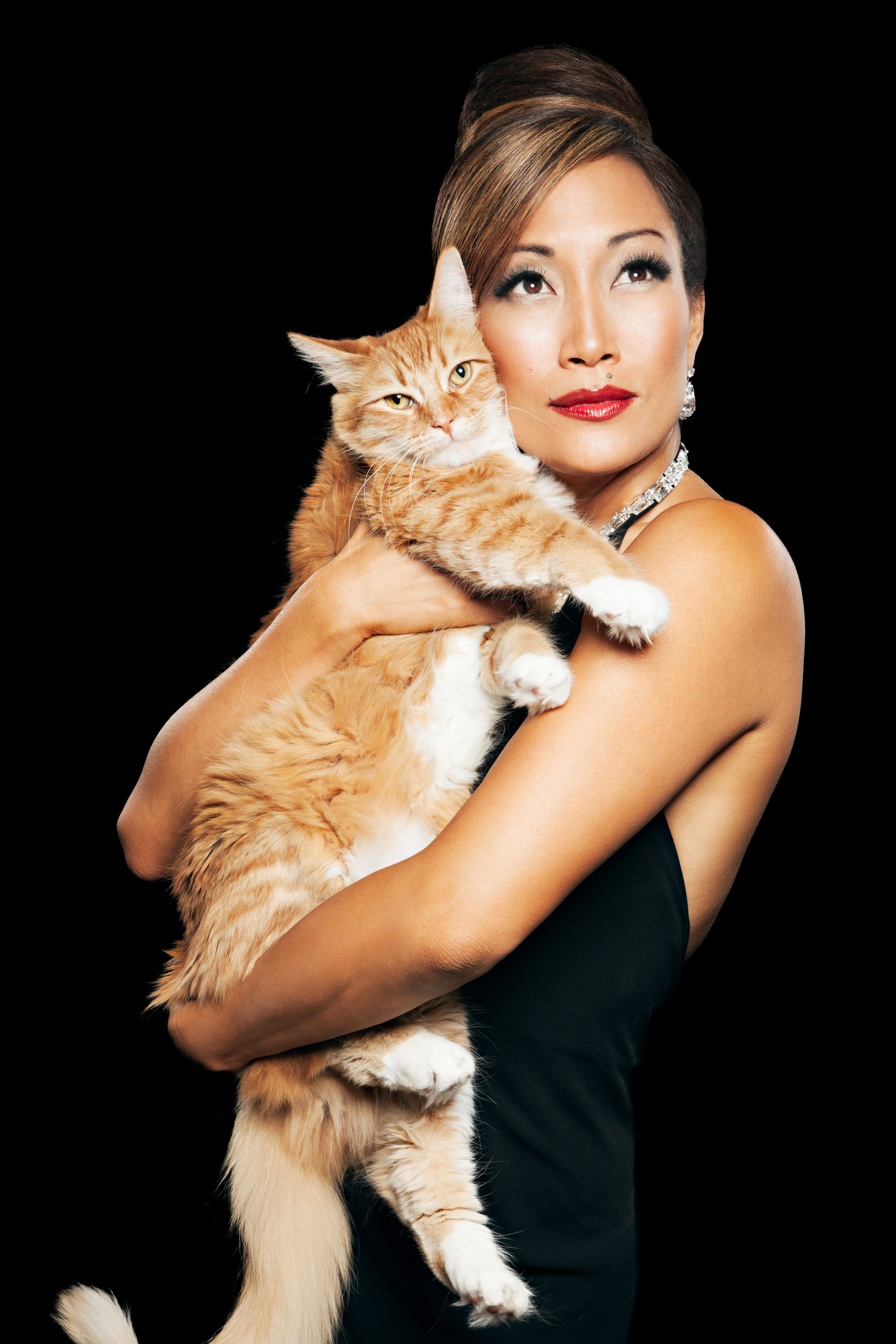Carrie Ann Inaba Joins Royal Canin to Encourage Cat Owners to Visit the Vet this Year
Pet Age Staff//August 14, 2017//
Carrie Ann Inaba Joins Royal Canin to Encourage Cat Owners to Visit the Vet this Year
Pet Age Staff //August 14, 2017//
No one can question people’s love of cats (and cat memes), but that love isn’t translating into visits to the vet. While 92 percent of cat owners agree that their cat’s health is important to them, only 41 percent take their cat to the vet for regular checkups, according to a new survey from Royal Canin, a pet nutrition company. In fact, only one cat is seen by a veterinarian for every five dogs, despite the fact that 10 million more cats are owned in the United States.
“We know our cats are smart and expressive, never hesitating to let us know how they feel about every situation,” joked Carrie Ann Inaba, choreographer, host, owner of three cats and founder of The Animal Project Foundation. “So it may be easy to forget that they cannot always communicate to us about their hidden health issues. That’s why I’m proud to partner with Royal Canin this year for National Take Your Cat to the Vet Day on August 22 to encourage cat owners everywhere to take time to support your cat’s health.”
Joining the brand in urging more attention to preventive veterinary care for cats are the American Association of Feline Practitioners, CATalyst Council, The International Cat Association and the Cat Fanciers’ Association.
To help cat lovers everywhere get involved in National Take Your Cat to the Vet Day, Royal Canin is asking cat owners to share a photo of their beloved feline and/or tips to a successful, stress-free vet visit, using the hashtag #Cat2VetDay. For every share, Royal Canin will donate $5* to Frankie’s Friends.
“Our goal with this year’s program is to rally cat owners, veterinarians, industry partners and even celebrities together to shine the spotlight on the importance of veterinary care for cats,” explained Kamie Eckert, president of Royal Canin USA. “While the gap in preventive veterinary care between dogs and cats in the U.S. continues to be a concern, the great news is that it can be addressed.”
Veterinary visits should not be limited to treating an illness or pain. Preventive care through annual or semi-annual visits is critical to a cat’s overall health and well-being. Veterinarians can learn important details about a cat’s medical history and behaviors, monitor body weight, ensure vaccinations are current and discuss nutrition, the number one topic cat owners are interested in talking to a vet about, according to Royal Canin’s survey.
“Cats provide us with much more than companionship,” said Jane Brunt, DVM, executive director of the CATalyst Council and owner of Cat Hospital at Towson in Maryland. “Their natural curiosity and playfulness make us laugh. And even though they express their love with purrs, meows and rubs, they are very good at hiding when they’re sick or in pain. This is why it is so important to take your cat to the veterinarian for routine wellness exams: to help reveal possible masked ailments and to make informed decisions about care that may prevent issues before they occur.”
In an effort to increase the frequency of preventive visits to the veterinarian by cat owners, Royal Canin sought to better understand why the number of veterinary visits for cats has fallen by 30 percent since 2001. Some of the eye-opening findings include:
- 68 percent of cat owners feel that cats are healthier than dogs.
- When asked why cat owners don’t take their cat to the vet more often, financial burden is the primary reason (40 percent), while 31 percent of people responded it’s because they believe their cat doesn’t need to go.
- Two-thirds (66 percent) say they would take their cat more often to the vet if it was easier to do so.
- Men are actually more likely to be found at the vet’s office than women. Thirty-four percent of male cat owners visit the vet more than once per year, compared to just one in four women (26 percent).
The survey also revealed a major barrier for cat owners is the stigma associated with taking time away from work to care for pets. Seventy percent of people wish their employers would give them time off to care for their pets. So it’s not surprising to learn that more than half (55 percent) would consider telling a white lie to their boss about why they had to miss work if the reason was related to their cat.
“Employers play a critical role in creating an environment that supports responsible pet ownership,” Eckert said. “And your employees will appreciate it if you make this part of your company’s perks. We found that 71 percent of people have a more favorable opinion of their employers who offer pet-related incentives. It’s just one reason we continue to explore programs that allow our associates to use paid time off to assist in caring for their pet.”
According to the American Association of Feline Practitioners, there are several things cat owners can do to make visits to the veterinarian more stress-free:
- Understand your cat’s behavior. The veterinarian’s office is unfamiliar and has sights, sounds and smells that can cause your cat to feel anxious or fearful. Cover their carrier with a towel to help block the sight of other animals and dampen the unfamiliar sounds. Respect your cat’s need for time to acclimate to the new environment.
- Help your cat become comfortable with the carrier. Place the carrier in a room at home where your cat spends most of their time and equip it with familiar soft bedding as well as special toys.
- Get the best carrier for your cat. Secure, stable, hard-sided carriers that open from the top and the front, and can also be taken apart in the middle, are best for your cat.
- Take your cat to a Cat Friendly Practice®. These veterinary practices have made specific changes to decrease the stress and provide a more calming environment for you and your cat.
- Keep peace in a multi-cat household. Leave the returning cat in the carrier for a few minutes to see how all your cats react to unfamiliar smells, and separate if there are signs of tension.



















